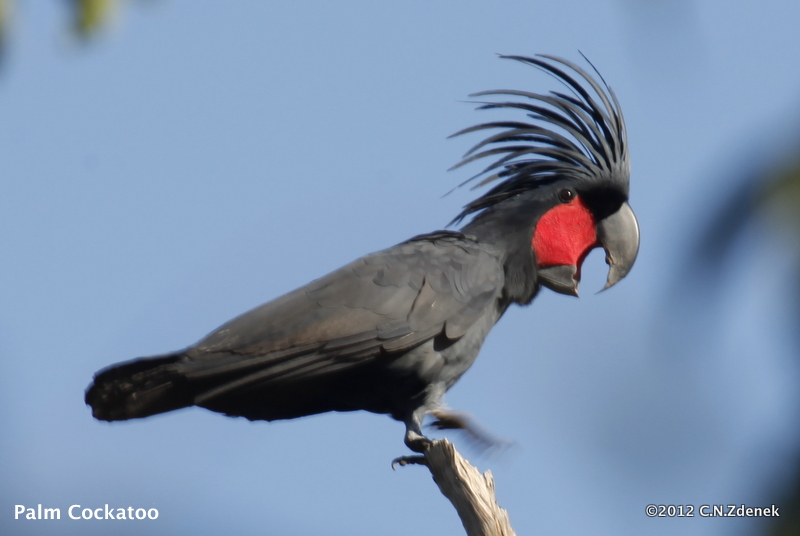
Probosciger aterrimus
SUBFAMILY
Cacatuinae
TAXONOMY
Psittacus aterrimus Gmelin, 1788, New Holland, Aru Islands,
Indonesia. Four subspecies.
OTHER COMMON NAMES
English: Great palm cockatoo, great black cockatoo, Goliath
cockatoo, Goliath aratoo, Cape York cockatoo, black macaw;
French: Microglosse noir; German: Arakakadu; Spanish: Cacatъa
Enlutada.
PHYSICAL CHARACTERISTICS
23.6 in (60 cm); 1.8–2.4 lb (910–1,200 g). Black plumage with
red or pink cheeks from bill to eye; large head crest.
DISTRIBUTION
P. a. aterrimus: Aru Islands and Misool, western Papuan Islands,
Indonesia. P. a. goliath: western Papuan Islands, except
Misool, Indonesia, and central New Guinea. P. a. stenolophus:
north New Guinea. P. a. macgillivrayi: south New Guinea and
Cape York Peninsula, northernmost Australia.
HABITAT
Lowlands in rainforest, gallery forest, tall secondary growth,
monsoon woodland, partly cleared lands and dense savanna woodland;
favors rainforest margins adjoining Eucalyptus woodland.
BEHAVIOR
Resident. Noisy, conspicuous when active in the morning and
late afternoon, but quiet and secretive when resting in forest
trees. Singly or in pairs while breeding, but small groups at
other times; roosts singly, departing well after sunrise to join
other birds at congregating tree, where much greeting is displayed.
When alarmed or excited, bare facial patches become
deeper red.
FEEDING ECOLOGY AND DIET
Feeds on seeds, nuts, fruits, berries, leaf buds, and probably insects
and their larvae, procured mainly in trees, but will come
to the ground; on Cape York Peninsula, favored foods are
fruits of Pandanus and Parinari nonda.
REPRODUCTIVE BIOLOGY
Monogamous. Pairs advertise territory occupation from atop
dead tree-trunk with spectacular “drumming” display featuring
raising of crest, spreading of wings, and striking a hollow trunk
with stout stick held in the foot while pirouetting slowly to the
accompaniment of loud, whistling call-notes. Breeding recorded
most months; nest in tree-hollow, bottom lined with layers of
splintered twigs, forming platform for single egg; incubation by
female 33 days; chick fed by both parents; fledging at 90 days.
CONSERVATION STATUS
Listed on CITES Appendix I. Affected by logging and forest
clearing in parts of New Guinea; hunted for food; widespread
capture for live-bird trade.
SIGNIFICANCE TO HUMANS
In vicinity of towns and villages locally extirpated by hunting
for food and trapping for live-bird trade; much in demand as
aviary bird.
Other popular Animals
Photo Gallery of - Palm cockatoo




 Animalia Life
Animalia Life